Memorizing Japanese with Anki
Although there are many ways to approach Japanese with Anki, my setup consists of three different card types: kanji, vocabulary, and grammar. On this page, I’ll describe the structure of each Anki card and how I grade myself during reviews.
I’ve uploaded an Anki package here that contains all the card formats described below so you don’t have to do any copy-pasting into Anki’s interface. It comes with three empty decks (“Kanji”, “Vocabulary”, and “Grammar”), but you can delete them and use the card formats separately.
Kanji Recognition
Given a keyword in your native language, write the kanji with the same meaning.
I followed Heisig’s Remembering the Kanji (RTK) while copying various mnemonics from Kanji Koohii, but the format works for kanji from any source.
| Front | Back |
|---|---|
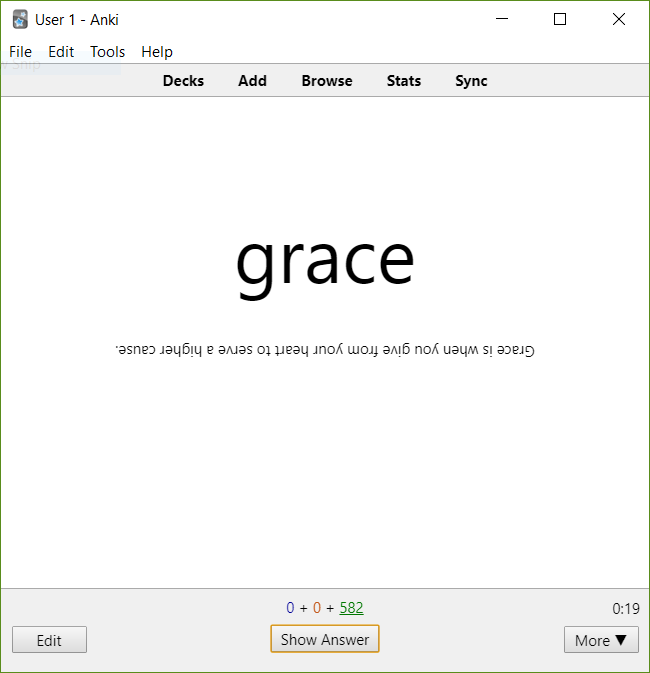 |
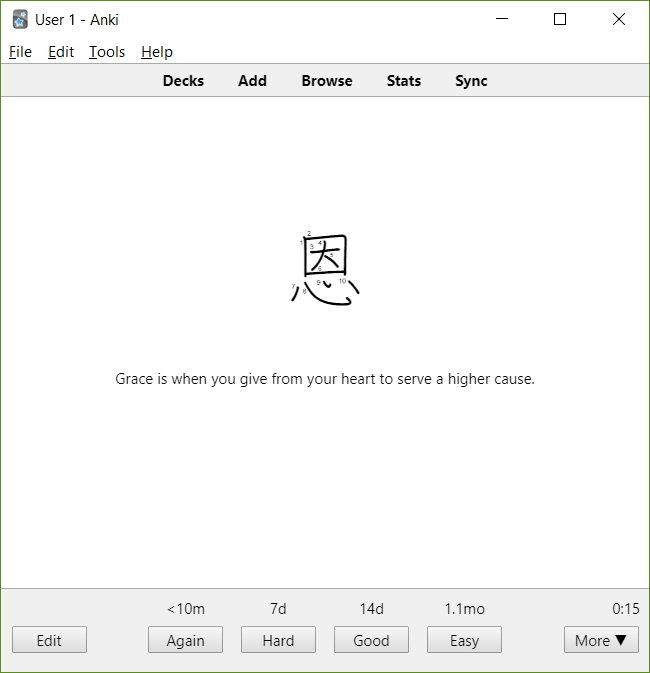 |
Features
The mnemonic on the front is upside-down to help you avoid reading it on accident. Challenge yourself to read only a word or two at first.
The font of the kanji on the back also contains the numbered stroke ordering, in case you need a refresher.
Rubric
When reviewing, I found it best to physically write out the kanji, usually with a ballpoint pen, Apple pencil, or 筆ペン for when I’m feeling feisty.
| Grade | Requirements |
|---|---|
| Easy | I wrote the correct character within 5 seconds without peeking at the mnemonic. |
| Good | I wrote the correct character without peeking at the mnemonic - even if it took 5 minutes. |
| Hard | I wrote the correct character, but ended up reading the any part of mnemonic. |
| Again | I wrote the wrong character, or couldn’t recall the character. |
Notably, correct stroke order is not a requirement. If you learned it correctly, you should be getting it right 99% of the time anyway, so don’t throw out a perfectly good review if you messed up the strokes.
Vocabulary Recall
Given a word definition in your native language, write the equivalent Japanese word in kanji. Then, read the word with the correct pitch accent.
I use a custom Anki plugin to automatically fill out the fields to this card. I generally add any word I find interesting, useful, or otherwise necessary to understand a particular sentence in real life.
| Front | Back |
|---|---|
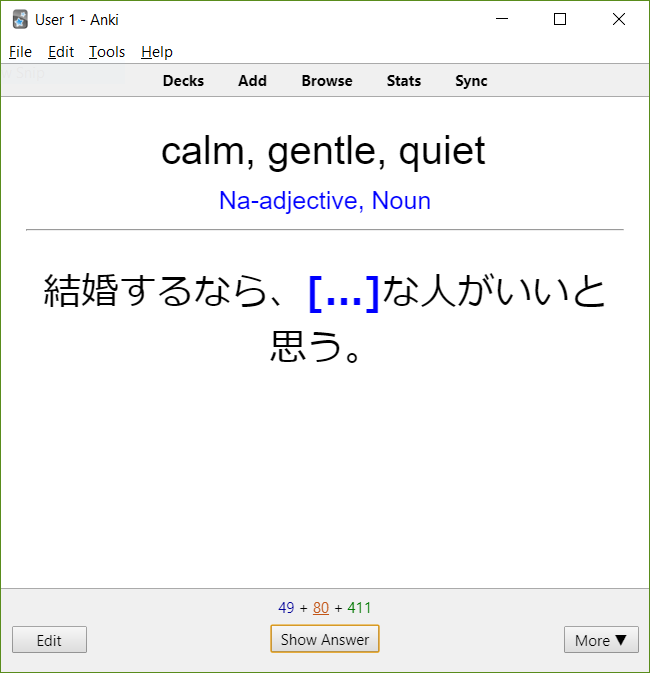 |
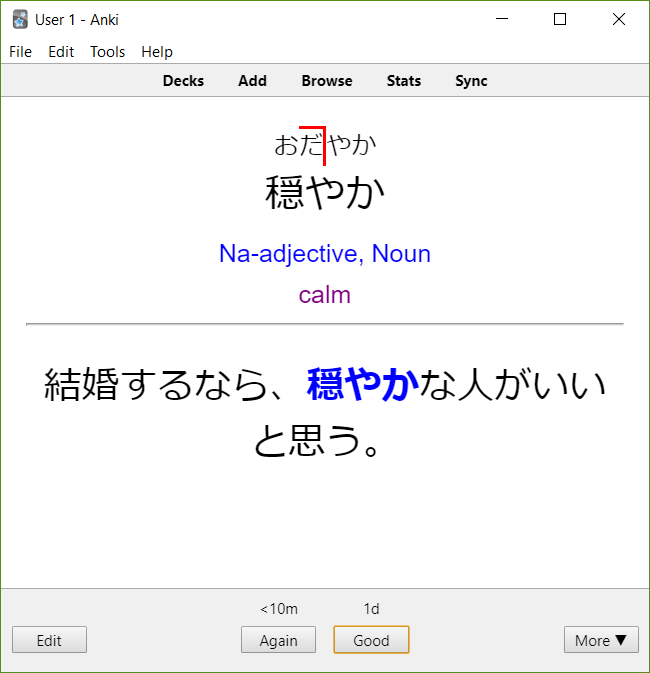 |
Features
A common problem with recall tasks is that Japanese often has many nuanced words where the native language may have just one. In order to address this, the front card template includes part-of-speech information and a clozed example sentence. You don’t have to read the sentence when reviewing, but it can help for nuanced words.
The back also shows the RTK keywords for kanji used in the word. If you got the kanji wrong, these can help you construct a mnemonic to remember it correctly the next time.
Rubric
Similar to kanji reviews, I also physically write out my vocabulary reviews. Once I’ve written it down, I say the word with the correct pitch accent.
| Grade | Requirements |
|---|---|
| Easy | I was annoyed that this word was shown at all. Delete the card. |
| Good | I wrote the kanji correctly, and pronounced the word with the correct sounds and accent. |
| Hard | I wrote the word, but either got the pitch accent wrong or got a radical wrong, ie. misspelled 険 for 除, 抑 for 仰, etc. |
| Again | Either couldn’t write a kanji, got two or more radicals wrong, or got the actual reading wrong in any way, even if there was 連濁. |
Grammar Cloze
Given a description of a Japanese grammar point and a clozed example sentence, complete the example sentence.
The description can be in English or Japanese. As there are many similar grammars in Japanese, you’ll likely need to add some usage notes, rather than just a rote translation. In the example below, the parenthesized 硬い表現 alerts you that this grammar is only used in particularly formal situations. Be very careful when writing grammar descriptions to make them both, accurate and distinct from other, similar grammars.
| Front | Back |
|---|---|
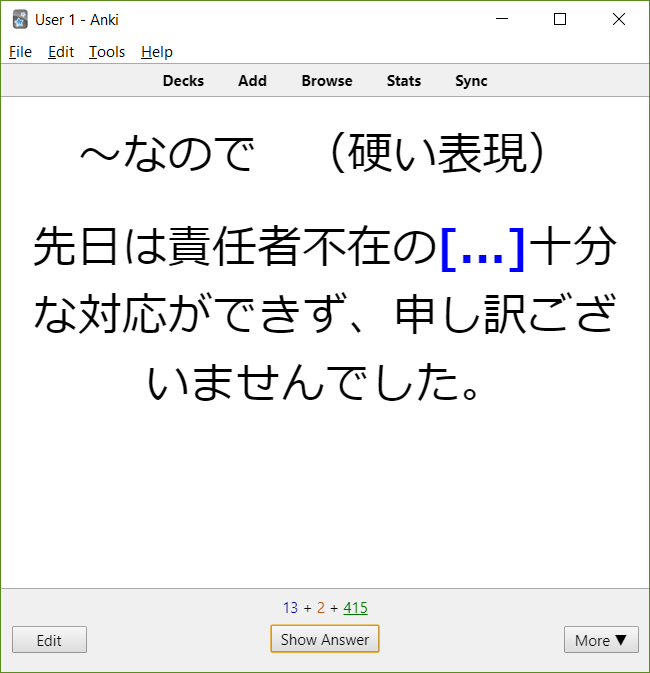 |
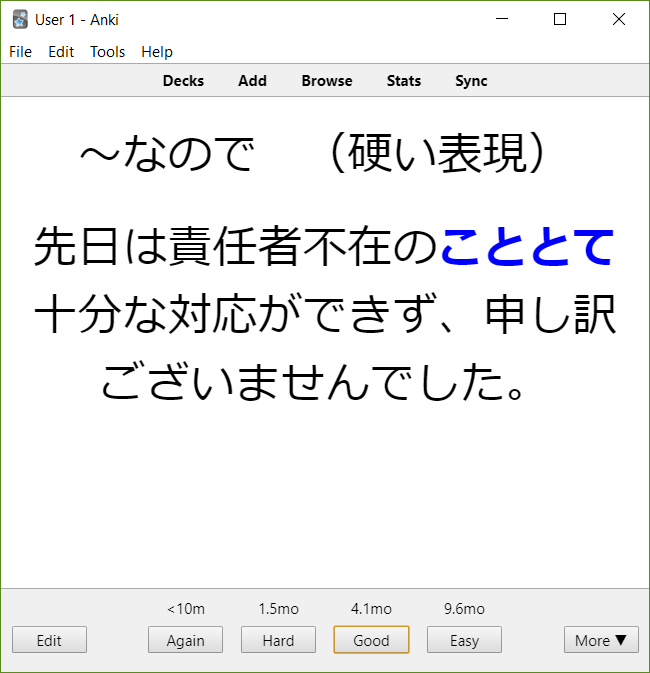 |
Features
The front contains an additional, invisible prompt field. When a grammar requires a specific conjugation, the grammar and the affected word(s) should both be clozed. Then, the dictionary form of the word is placed in the prompt to allow you to complete the card. In the example below, the volitional form of a verb is required for the grammar.
| Front | Back |
|---|---|
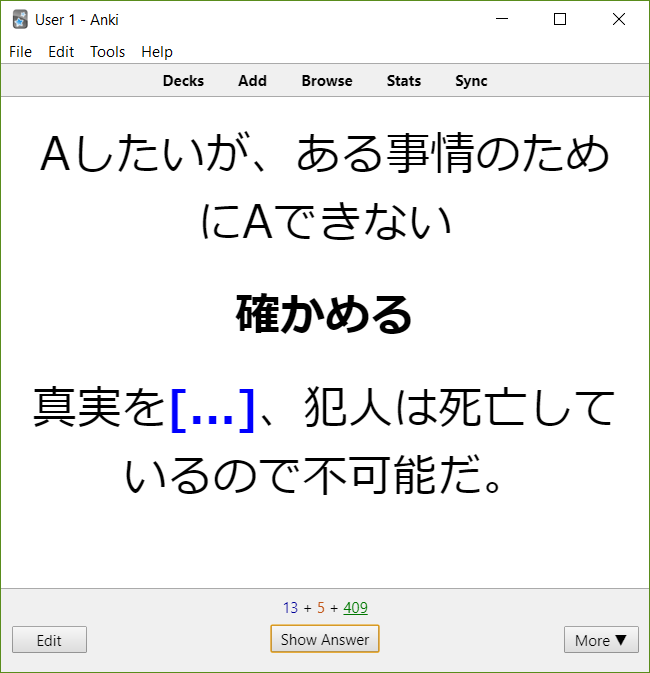 |
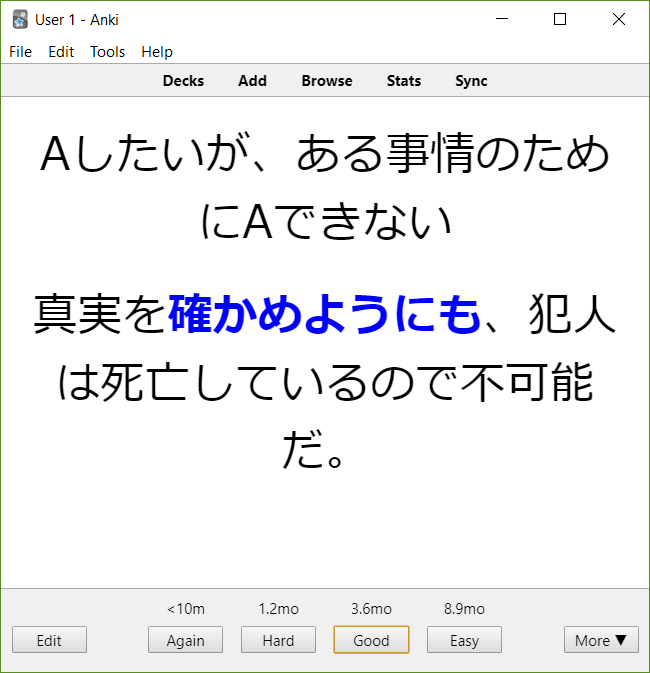 |
Otherwise, this is a rather run-of-the-mill cloze card.
Rubric
Grammar reviews are the easiest and require no writing. Just say the clozed portion of the example sentence.
| Grade | Requirements |
|---|---|
| Easy | I’ve memorized the sentence. Delete the card. |
| Good | I read the sentence with the correct grammar within 10 seconds. |
| Hard | I read the sentence, but it took more than 10 seconds, or I used a similar grammar (ie. ので instead of から). |
| Again | I conjugated the prompt incorrectly, used a completely different grammar, or otherwise couldn’t recall the grammar. |
When you accidentally use a similar grammar, it’s often still correct Japanese. However, if it happens often, consider refining the descriptions for those cards. The example sentences in textbooks are specifically constructed to exemplify a specific feature of that grammar, so you should always strive to select it correctly.